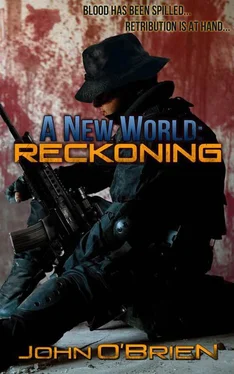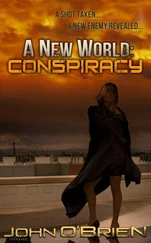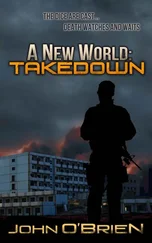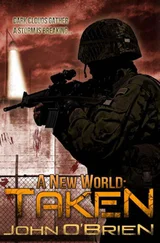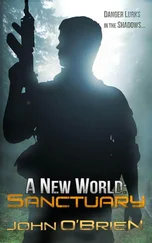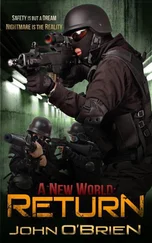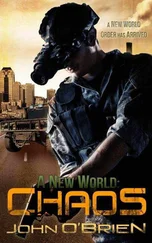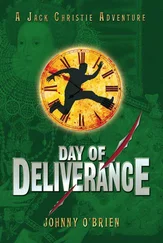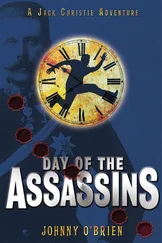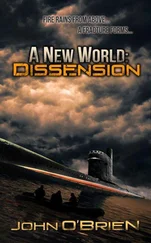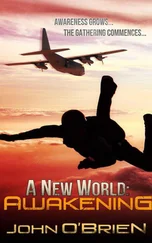Finishing with our run down the river, I call Frank and inform him.
“Funny, I was just thinking of something along those lines,” he states. “If we managed to take down those bridges, I was thinking it might force the night runners to circumvent us or halt them altogether.”
“That will also mean that we are cut off from the north. We’ll lose our supply runs to the distribution center and the bases,” I comment.
“That’s true. We’ll have to pull everything we think we’re going to need onto our side before we do anything. I’ll talk it over with Bannerman,” he says. “Do you think we can take them out with the Spooky, or will we have to bring them down with planted explosives?”
“I think we can drop them with the 105,” I answer.
“Are there any shallow places?” Frank asks.
“There wasn’t a lot of light to see by, but it looked like there were a couple south of the railroad bridge. In any case, we’ve taken video of the entire river which you can look over,” I say.
With our little detour complete, we climb back and proceed with our primary mission for the night; to see what the night runner population and area of spread is. Across the valley, beginning at the southern fringes of Fort Lewis, the urban sprawl spreads out from the edge of the Puget Sound to about fifteen miles inland. This continues all of the way up to the Seattle area and beyond, providing more than enough locations to shelter the number of night runners pouring out of Seattle.
The land below is bathed in darkness as we begin our run. As if on cue, against a gray background, our screens light up with white figures emerging from buildings. I can only imagine the noise below with thousands of night runners screaming as they pour out into the night. Looking at the multitude of small to mid-size packs on the screen, it immediately becomes obvious that Frank was right, the night runners are flowing south in great numbers. As before, the number of packs increases as we fly north, but they have definitely come farther south since the last time we flew over.
As we drone northward, watching the whitish figures running in packs, I begin wondering which is really the greater threat; the group targeting us or the infiltration of night runners toward our compound. The bridges begin to take on a greater significance.
“You’re getting this, right?” I call to Robert.
“Yeah, Dad. That’s a shitload of night runners and we’re not even to Federal Way yet.”
He’s right, and that’s the understatement of the year. It definitely looks like our neighbors have been busy since we’ve been gone, and we’ll be hard-pressed to keep up with the Joneses. We fly a crisscrossing pattern up to Seattle and press farther north, observing the same pattern of night runners. They are definitely fanning out from the city into the surrounding areas. The same thing is seen to the east, only marginally so as the urban area falls off quickly due to the foothills leading to the Cascade Mountains.
Hours after taking off, we finish our surveillance of the urban areas to our north. Large numbers of night runners are spreading out; mostly to the north and south of Seattle. The area around the big city is still dense with packs but they’re moving.
“Robert, you can stop the recordings. We’re moving south. I want to target packs and buildings to the west, north, and east of McChord,” I call.
The sheer numbers that we’ve observed is disconcerting. Although the vast majority is still far north of us, their movement south is cause for alarm. I admit their timing could have been better; but when have they ever taken our needs into consideration? And that’s not to mention the numbers on our side of the river that we haven’t been able to locate yet.
Heading back south, we fly over the area of devastation caused by hitting the propane storage facility. Everything for a half-mile around the central crater has been completely obliterated. It’s almost too bad we couldn’t drop those kinds of facilities in the middle of the large night runner build-ups.
Orbiting just to the west of the airfield at McChord, Robert begins the systematic targeting of night runner packs running down the residential streets. Bright flashes appear on our screens as 40mm rounds pepper the larger packs. White figures running together are thrown to the sides as the explosive rounds burst in their midst. Several vehicles parked along the curbs ignite as white-hot shrapnel penetrates the thin skins of the fuel tanks. In others, glass is blown inward and the car bodies peppered. Night runners are thrown with force into them, snapping bones with the impact.
We orbit street after street, leaving dead or dying night runners lying on the hard, cold pavement. Streamers of red light leave the Spooky and intersect the avenues, sparking as 25mm shells slam into the hard surfaces. Ricochets stream upward into the night as the rounds walk through the packs. Night runners are torn apart from the high-speed impacts; and soon, the streets in our orbit go dark.
Robert then goes to work on marked locations with the 105mm howitzer, destroying house after house. When one area is clear, we move on to the next. It’s like watching a looped playback video only with a slightly different background.
“Okay, let’s call it a night and go home,” I say after we begin running low on ammo.
We land and are met with rides to haul us across the compound to Cabela’s. I’m tired from the flight and ongoing stress. My gear bag feels like someone stuffed an elephant in it while I wasn’t looking and it’s the best I can do to drag it along with me. Entering the building, I turn to say goodnight to the crew and tell them that we’ll debrief in the morning.
Just inside the now closed inner door, Robert is staring at his boots and holding one hand to his head. He drops his bag and, with a look of agony, brings his other hand up. Holding his head tightly between his hands, he sinks to his knees with a groan. Dropping my own bag, I rush over to him. On his knees, he drops his forehead to the floor and begins moaning as he rolls it back and forth.
I drop to my knees beside him, putting my arm around him. I’m about to ask what’s wrong and send for the doc when he lifts his head and shouts something unintelligible. On his hands and knees, with his eyes clenched shut, he throws up.
In a state of shock, Leonard stares through the viewfinder toward the shore just a few miles to the east. Moments ago, he took in the whole scene, a smoke pall covering the wreckage of what used to be San Diego. Skeletal remains of several buildings rising among piles of rubble are barely visible. With the cameras recording but not being presented on any of the monitors, he concentrates on the shoreline where the fleet, based at the southern California city, would dock.
The strip of sand that linked the mainland to the Navy depot, creating the inner bay, has been obliterated giving a clearer view of the wrecked docking facilities. The submarine tenders and docking facilities are hidden by a headland but Leonard knows, should he be able to see them, that they will look the same. Panning the inner shoreline, he looks for any sign of the fleet, but finds none. The only indication that there was any Navy presence is the overturned hulls of the old aircraft carriers that were on display or being systematically taken apart for scrap metal.
Looking across the ruins, thoughts circulate through his mind. There is still a shred of hope that the families, and some naval presence, made it due to the lack of navy ships present. At any one time, several are always in port, either for crew rotations or repairs. However, other than the wrecks, there isn’t a one to be seen. He holds a hint of optimism, perhaps a wish more than hope, that the fleet took to sea with survivors before the city was hit. The lack of communication doesn’t lend any credence to this desire, but it doesn’t mean that it’s impossible.
Читать дальше
